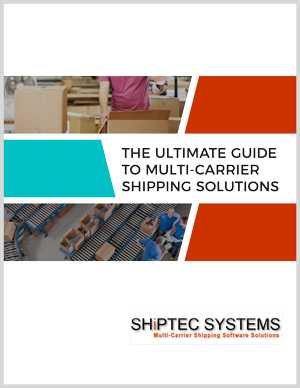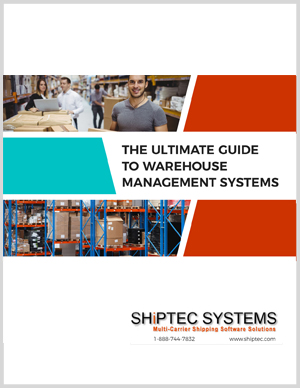Every business struggles with finding the best way to ship their goods. No matter the size of the business, large or small, the challenges are the same, and take a lot of resources to overcome unless a Multi-carrier Shipping tool is utilized.
This popular way to control shipping costs, and manage orders has been growing with the explosion of ecommerce businesses worldwide. The key feature in most of the offerings on the market is automated rate shopping – or the ability to quickly identify the most cost effective way to ship goods to the end consumer. Automated rate shopping takes many forms, but at it’s best, can be a simple process that eliminates manual referencing through multiple carrier websites. Complex algorithms can take into account many different aspects of business to produce the best, least expensive option to ship packages to customers.
Automated rate shopping, at industry standard, has been proven to reduce overall annual shipping expenditures by at least 5%. Beyond the monetary cost savings, it is important to consider the time employees spend manually reviewing alternative shipping options that fit the company’s particular needs and business rules. Looking for the least costly alternative for shipping goods and services, when automated, can save up to 50% of staff time. This results not only in a monetary savings by making the right shipping choice every time – eliminating human error completely – but also frees up employees to manage other tasks that require manual attention. The national average salary for a warehouse manager was $32,124. Given this statistic, employing an automated rate shipping solution could save $16,026 in salary costs annually. Combine this with the 5% annual shipping expenditure savings, and the service can pay for itself in the first year if chosen wisely.
The assurance of accurate shipping selection every time, knowing that employees can spend more time on the tasks the business needs them to, and possible FTE (full-time equivalent) savings, is exactly what makes automated rate shopping the new industry standard. So what should be considered when selecting a multi-carrier shipping vendor with automated rate shopping?
Ease of Process & Reliability
The process of comparing shipping rates across carriers for various size and weight packages can be a tedious task, especially when there are company rules to take into account. When done manually, there is the opportunity for employees to make errors, or not be up to date on the latest business rules or industry standards. Rate shopping solutions that will show the greatest return on investment will allow you to program these rules directly into the system, and alter them as necessary. Also look for something that will automate as much as possible – dimensional weighing in the form of preset box sizes, international export documentation with pre populated fields, and shipment notification emails with clickable tracking links that are carrier specific. All of these details are not to be overlooked, as they all have the possibility for human error that can result in additional costs to the company.
Reliability is key when shopping for a solution, and the necessary credentials are essential to making sure shipping labels are continually in compliance. Select a third party certified software vendor, this will ensure that labels will have the most up-to-date features and fields that meet carrier guidelines. Although possible, it is labor intensive to produce these labels manually through individual carrier websites; and when time is money, automation is the answer. Look for companies that keep up with the latest shipping innovations and offer custom labeling options such as vendor specific labeling like UCC labeling, custom labeling with specific return addresses, etc.
Range of Services
Find a vendor that offers a range of services that support a spectrum of business needs. Things like adding insurance, cash on delivery, return service, required signature, or even hazardous shipping documentation are all features that can be included in an multi-carrier shipping software. Some of these features require additional documentation, which creates extra work for employees if not wrapped into the same workflow as rate shopping and label creation. This can also be an opportunity for additional errors, and additional expense as a result to fix them later on. Bills of lading should also be taken into consideration when assessing available options. Pay special attention to standard, voluntary interindustry commerce standards (VICS), or custom requirements, and choose a solution that supports the automation of these documents and integrates them into existing workflows.
HOW CAN PRIMUS HELP YOUR BUSINESS?
SCHEDULE A DEMO TODAY
Contact us today to schedule a no obligation product demonstration or read more about our Primus Multi-Carrier Shipping Solution.
Integration Capability
Existing policies and procedures can be easy to work new software tools into, especially if they speed things up. Often times, what is much more difficult is finding products that work together to make a streamlined workflow that accomplishes the end goal of getting packages out the door. There are multi-carrier shipping options that can utilize existing hardware systems such as computers and scanners, which means little to no additional investment to get them implemented. Beyond hardware, a product that integrates with current reporting software, existing order fulfillment software, or postage processing software creates operational efficiencies that add to overall time and cost savings. If there is a need for reporting beyond what is currently possible in the business structure, look for a software solution that allows custom reporting to be exported to standard business programs such as Excel, or Crystal reports.
Scalability
Scalability is arguably one of the most important considerations when looking for a multi-carrier shipping software solution. Small, medium, and large businesses always have potential to grow in inventory, product offering, or expanding into other industries and markets. This means there will always be a need to scale the workflow and processes that ultimately satisfies company goals. No matter what stage of business, getting workflow right is an essential component of success.
Of course affordability needs to be addressed, but other things to look for include the possibility to expand from stand alone workstations, to multiple workstations as volume of processing grows, multiple levels of security, and customer service growth capability. Clearly, as volume of shipment processing grows, so does the need for additional workstations (even if growth isn’t in the immediate future, operational efficiency is always something that can be improved). Growth is a good thing, but can open businesses up to processing inconsistency as employees are added to the mix. By utilizing a product that allows different roles and permission levels to different roles within an organization, efficacy of every order can be improved. Seemingly simple features like this create a quality control standard that consumers have been conditioned to expect.
Consumers dictate success no matter the business, and keeping up-to-date with market expectations is enough to set businesses apart from the competition. Look for a product that makes the entire order visible across multiple departments to maintain the ability to answer customer inquiries in real time. Finally, the best options will help grow and manage businesses in terms of operations and workflow. This will likely come in the form of a modular system, with add on features, that is easily built to result in the best outcome with every order while maximizing overall efficiency and revenue.
Comments are closed.



